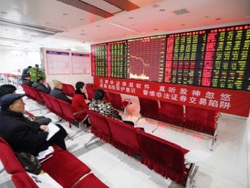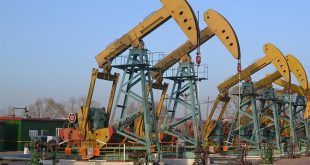
Undoubtedly, the ongoing slowdown of China’s economic growth is causing far-reaching consequences in the global economy.
However, the role of “Chinese factor” in the collapse of commodity prices, which occurred in the second half of 2014 and dealt a devastating blow to the economies of commodity exporters, is highly overrated.
As written in his article on Project Syndicate chief economist Shang-Jin Wei and economic adviser Abdul Abiad Asian development Bank, the slowdown of China’s economy is only one of the factors that caused the sharp fall of commodity prices.
“Undoubtedly, there is a clear relationship between the GDP growth rates of China and commodity prices. In the early 2000s, when economic growth accelerated dramatically increased commodity prices; since the slowdown of China’s economy in 2011, energy prices fell by 70%, metals prices by 50% and the prices of agricultural products by 35%.
But the view that the slowdown in China’s economic growth is the main factor in the sharp fall of commodity prices, at best, is incomplete.
A new study by the Asian development Bank shows that although China and plays a significant role on the commodity markets, consuming about half of global production of metals, coal and pork, with other commodities he is not so dominant role as it is considered to be.
China consumes less than one fifth of world production of sugar, wheat, poultry and beef, 12% of the world production of crude oil and 5% natural gas production. In fact, commodities that experienced the greatest reduction in prices – primarily oil (the price fell 73%) and natural gas (the price fell by 55%), are such resources, the consumption of which China plays a rather minor role.
In addition, the actual consumption of commodities by China is even lower than indicated by simple calculations.
The regular valuation, instead of taking into account the international production chain, just take the amount of commodity production and the country’s net commodity imports raw materials, in order to determine the level of consumption of natural resources. But for China, a significant part of the consumed raw material resources actually used in the production of goods that are exported to other countries. In fact, almost a third of the Chinese consumption of metals is used to meet export supplies. If you subtract the volume of commodities included in the exported manufactured goods of China, it will significantly reduce the share of China in the markets of primary raw material resources.
The study of price fluctuations of commodities confirms that view. Consider the example of copper prices: from 2001 to 2006 these prices were moving in a great spiral with a decline in some years up to 30%, then increase up to 150% in other years, while the growth of industrial production in China and demand for copper have remained relatively constant: 15% and 20% respectively. It is clear that other factors from supply factors and global demand to speculative claims and inventory management – play a major role in the present results on the commodity markets of raw materials.
So how does the slowdown in China’s economic growth in the prices of raw resources? Even though the pace of China’s economic growth slowed from 2011, the increase in the consumption of natural resources still outpaces such growth in other countries. This increases the share of consumption of natural resources of China in global resource consumption.
This is not surprising, given that the growth of China’s GDP, although significantly behind two-digit numbers in the heyday, still more 6% year on year. In connection with the change of model of economic development from growth due to investments in growth pattern due to the increase in consumption will decrease the demand for metals and energy, but will increase the demand for food and services and consequently on agricultural products.
The conclusion is clear: the changing economic situation in China is not a tragedy for commodity exporters. On the contrary, even if, as many fear, China’s growth will slow down in the future, the impact on prices of raw material resources will be limited.
The maintenance of further growth of prices of commodities is term one that will accelerate in the coming years due to the needs of such developing giants as India and Indonesia. The developing economies of Asia today at about 4 per cent higher than today’s Chinese economy; this economy is twice more than the Chinese economy in 2000, when demand began to rise in raw material resources.
If steady growth in other Asian countries with developing economies will continue in the next 15 years, this will cause demand for commodities at least in the same amounts as the demand from China in the years of high economic activity.
The relationship of lower commodity prices from the slowdown in China’s economic growth is obvious. But a sharp and General decline of these prices cannot be completely attributed to the Chinese factor.
Probably more important is the fact that China is still importing large volumes of raw materials, and the rest of developing Asia will create a new surge of demand for commodities. In this case the prospects for recovery of commodity prices look brighter”.







